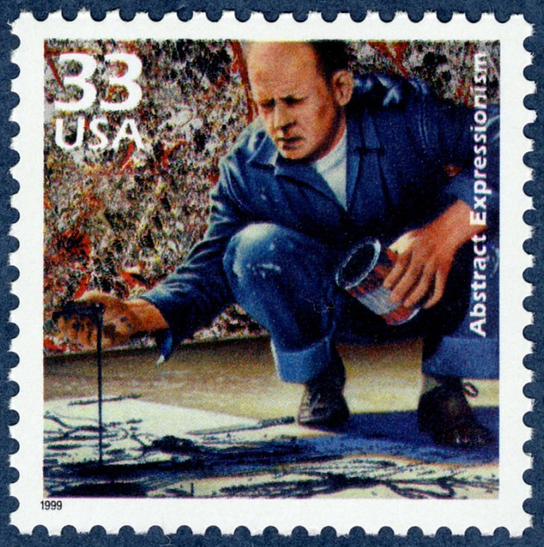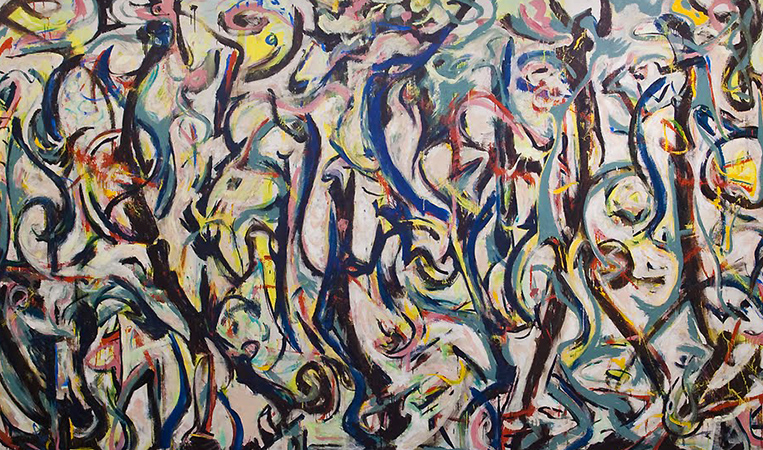
Jackson Pollock & Abstract Expressionism
Jackson
Pollock

Jackson Pollock's Life Summarized
Full Name: Paul Jackson Pollock
Birth: January 28, 1912, Wyoming
Died: August 11, 1956, East Hampton, N.Y
Spouse: Lee Krasner (another abstract expressionist)
Jackson Pollock was an american artist specializing in Abstract Expressionism; otherwise known as an abstract expressionist. Pollock was a very influential Artist - likely one of the most, along with Willem de kooning, in art history in the 1900s; especially abstract art history. Jackson Pollock inspired many other artists and greatly helped abstract expressionism gain recognition as its popularity rose.
Jackson Pollock's Early Life
Jackson Pollock grew up in Arizona and California. his father was an alcoholic and therefore left Pollock and his family, only visiting sometimes. He began studying painting at the manual arts high school, los angeles. Later on, he then moved to New York to study at the arts students league with the help of Thomas Hart Benton. Pollock spent most of his time in New York and eventually decided to settled there.
Intro to Jackson Pollock's Relation with Abstract Expressionism
Jackson briefly worked as a maintenance man at a museum before getting a contract from Peggy Guggenheim to make a mural. In 1943, Pollock was able to have his first solo show at Guggenheim's Art of this century. Pollock's artwork, especially his paintings, from there, started to show more and more of an abstract, surrealist image Pollock continued his abstract expressionism by things creating abstract artworks like 'Mural' and even creating popular abstract painting techniques such as 'drip/action-painting.'
Jackson Pollock also had an alcohol problem and depression for most of his life. He had to go to therapy and rehab to try and gain sobriety and better his mental health. For 2 years, Pollock was able to gain complete sobriety and he create many, good abstract art pieces. In his abstract expressionism art pieces, he was basically able to vent and express the depression, struggles, and chaos in his inner mind as well as try to convince others to express their emotions and their inner unconscious with art.
In 1955 & 1956, his alcohol and depression problems got the best of him, causing him to stop painting and creating art. He was also having issues within his marriage with Lee Krasner at the time due to his consistent drinking problem and an affair of his.
Jackson Pollock's Death and his Legacy
Jackson Pollock died in a car crash at the age of 44, under the influence of alcohol as he drove. In the car with him was Ruth Kligman and Edith Metzger. Ruth Kligman was a woman, another artist, that Jackson Pollock had an affair with. Edith Metzger was one of Ruth's friend. Due to the car accident, Edith metzger passed away while Ruth Kligman was the only survivor.
After his death, Abstract Expressionists and artists overall, were able to look at Jackson Pollock and his artwork as something that greatly showed and proved to people that abstract expressionism can be art/modern art. After he died, Pollock also greatly influenced and inspired other artists/ abstract expressionists to play around with art in the hopes of creating new [abstract] art methods; like he did with drip/action-painting.
The
Movement
ABSTRACT EXPRESSIONIST
What is abstract expressionism?
Abstract expressionism is a certain kind of art style Jackson Pollock often used, along with other popular artists like William De Kooning. An abstract painting would usually include a lot of different colors in it that blend well together. It came to be during the following years of World War II when a group of artists disagreed with figuration, another form of art, but favored abstraction or abstract art. Eventually, they became known as Abstract Expressionists. Abstract Expressionism is split into two different kinds of groups. One group is known as action painters, like Jackson Pollock. The other group is known as color field painters. Two examples are shown below.
Action Painting: Color Field Painting:
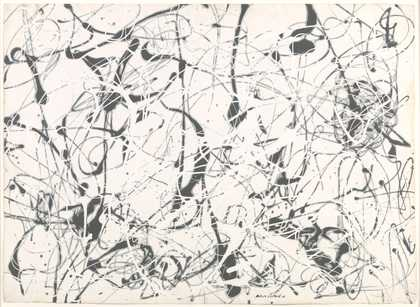
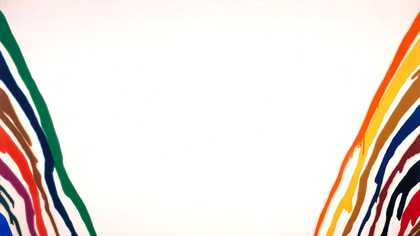
What is the Abstract Expressionist Movement?
The Abstract Expressionist movement developed in the 1940s and ended in the late 1960s. Some leaders in the Abstract Expressionist movement were Jackson Pollock and Willem De Kooning. The Abstract Expressionist Movement began in New York during the 1940s in the years following World War II. The purpose of it was to inspire artists to express "their emotions" rather than "the reality" through art. Later on, the group of artists became known as the Expressionists, and like the purpose of the Abstract Expressionist movement, they aimed to create expressive and emotional pieces of art through abstraction. Expressionists were heavily inspired by surrealism, which is another kind of art style that is the result of the idea of exploring the "unconscious" or the "mind."
In order to accomplish their goal, they experimented with different and new techniques to apply paint using nontraditional methods and tools like a paintbrush. An example of a nontraditional method would be splattering paint from the can onto a canvas. Creating new techniques assisted in expanding the idea of Abstract Expressionism and showed the uniqueness of the peculiar style of art. Not only was Abstract Expressionism unique, but it also transitioned us into the modern art era. Most of the art we see today is abstract and all of that came from this exact movement.
So, the impact the Abstract Expressionist movement made was that it influenced people to go outside of the "art standards" of their time and made them truly creative, giving them new ideas outside of the standards they were in before Abstract Expressionism. By art standards, I mean using paintbrushes, an easel, and a canvas to paint. These were the original tools they would use to create art pieces. But now, Abstract Expressionism and the Abstract Expressionist movement created a change in those standards.

Jackson Pollock
And
Abstract Expressionism

Intro to Jackson Pollock and Abstract Expressionism
Jackson Pollock is an abstract expressionist, meaning he supports Abstract Expressionism and abstract art; he felt that art should come from the inner mind and that art can be abstract, though others, at first, may not see the full picture/meaning. Like when he expresses his depression, sobriety, etc onto his artwork. Jackson Pollock is one of the most influential figures in art history [in the 1900s]. Especially when it came to abstract expressionism and raising it's popularity. He's also one of the artists that started the Abstract Expressionist Movement, along with Willem de Kooning.
Jackson Pollock and Drip/Action-Painting
A popular way of abstract painting that was created by Jackson Pollock is action-painting; it is also known as drrp-painting. Action painting is loose, rapid, brushstrokes where you basically spontaneously brush a paintbrush with paint over a canvas to make an abstract piece of art. Drip-painting is where an artist drips paint onto a canvas to portray a certain emotion or feeling and make an abstract piece of art. Both techniques aren't planned, they're spontaneous and the outcome is not exactly planned either.
Action/Drip-painting is a very popular abstract method of creating art. It allows for artists to express themselves and what they're feeling at the moment instead of being restricted by needing a clear, certain outcome (which is what makes it appealing to other artists). With action and drip-painting, more and more artists and people are expose to abstract expressionism and abstract art, causing the development and recognition of abstract expressionism to increase.
For example, a very popular action painting of Jackson Pollock is Convergence. It was made in 1952. As you can see from the picture, it looks very random, unorganized, and as if it has no deeper meaning, but that's why it's called action painting; you paint at that specific moment without imagining a clear, visually appealing outcome, just focus on your inner mind and emotions.
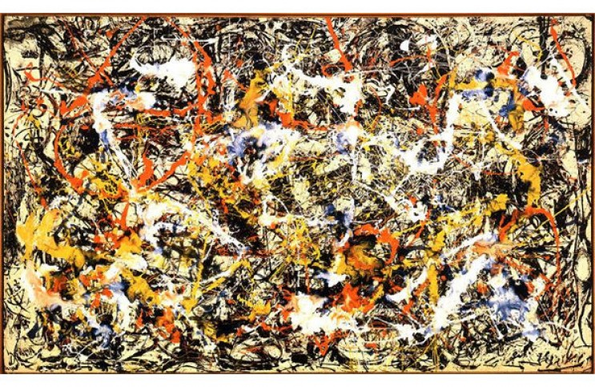
Jackson Pollock and his Overall Influence on Abstract Expressionism
When it comes to Modern Art, it is overall very restricted and limited. Not very many people are open-minded when it comes to what is art and what is not art. Abstract Expressionism and Abstract Art is one way of art that not many people are fond of. Some people even say that Abstract Art has no deeper meaning and that it is just scribbles and all. Most people want Modern Art to be a clear, visually appealing image; which is a big reason as to why Abstract Art isn't looked at as modern art. However, with the help of Jackson Pollock and his abstract expressionism artworks, he is able to break the limits on modern art and allow for artists and people to see the full potential of abstract expressionism.
Jackson Pollock, though faced with many critics and hateful comments that his art is something anyone can do, pushed through and still continued to encourage new ways of art, especially Abstract Art/Expressionism. Pollock knew that abstract art can be considered art as it comes from the inner heart and is trying to show/express the deeper feelings and chaos in one's mind.
Jackson Pollock influenced many other artists to commit to - or at least try - abstract expressionism/art as it allows for the person to create art without knowing the outcome. Even after his death, Jackson Pollock continued pushing the limits on modern art as his artworks were able to still influence many artists to play around with art to try and create a new way of modern art. Because of him never giving up on creating abstract, expressive, artworks, Abstract Expressionism was able to gain more recognition as Modern Art and the possibilities of what art can be - or just art in general - was expanded. More and more people around the world started acknowledging that abstract art/expressionism is a type of modern art, you just have to look at the deeper emotions and meanings in the artwork.
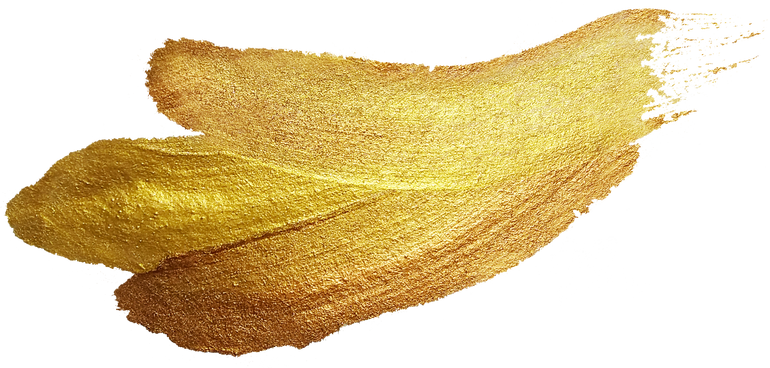



Circumcision: It was made in 1946. This specific artwork of Pollock's was inspired by Pablo Picasso. However, it was also a sort of transition in Pollock's artwork because this was one of the artworks where he started using/showing more of his action-painting technique.
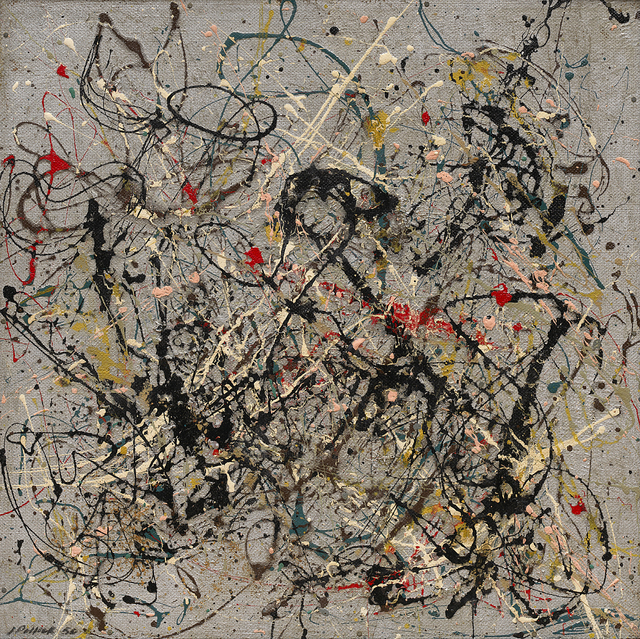
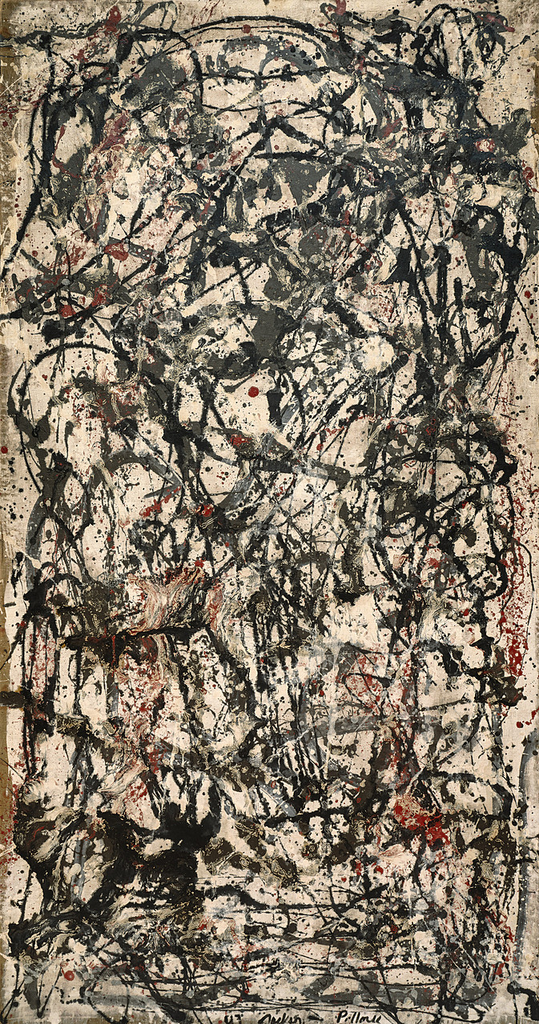
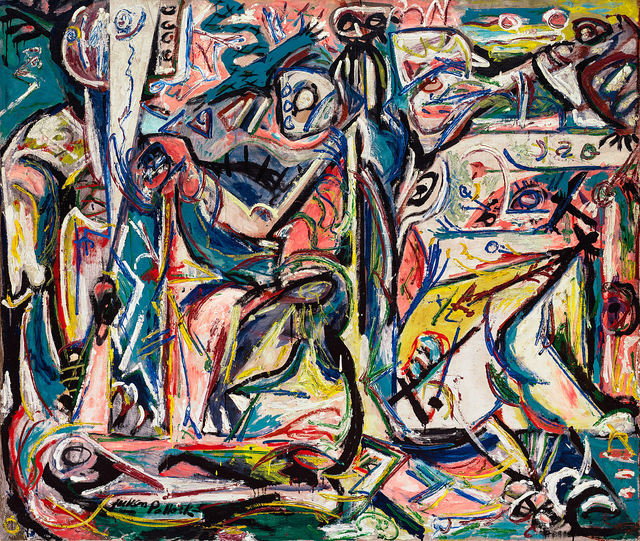
Number 18: This artwork is one of Jackson Pollock's first fully mature works. It was a response to Surrealism and an artwork of his that introduced new directions and methods of art (dripping paint onto a blank, white canvas).
Enchanted Forest
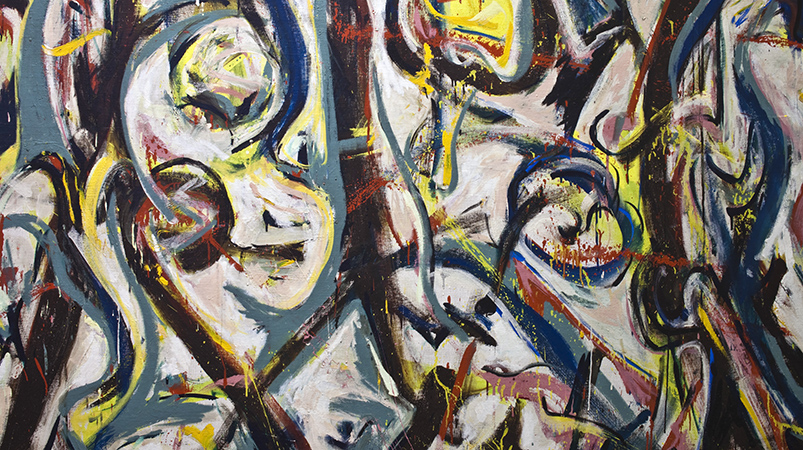
Mural
Two
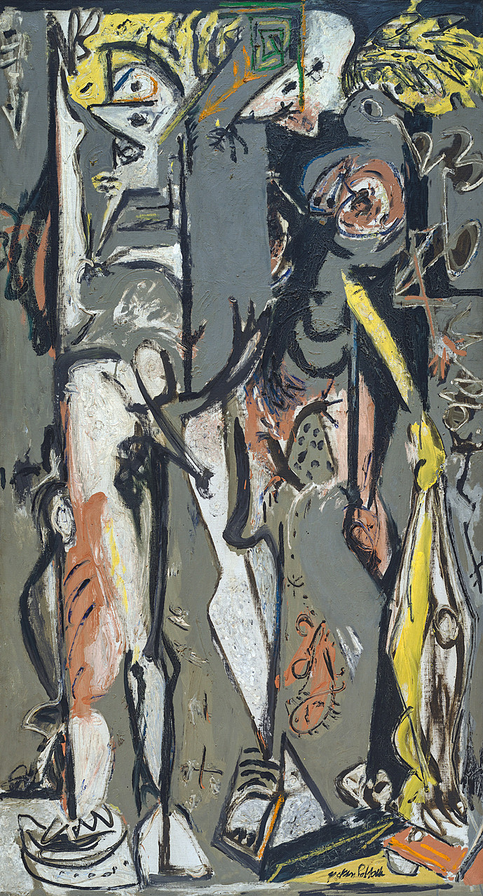
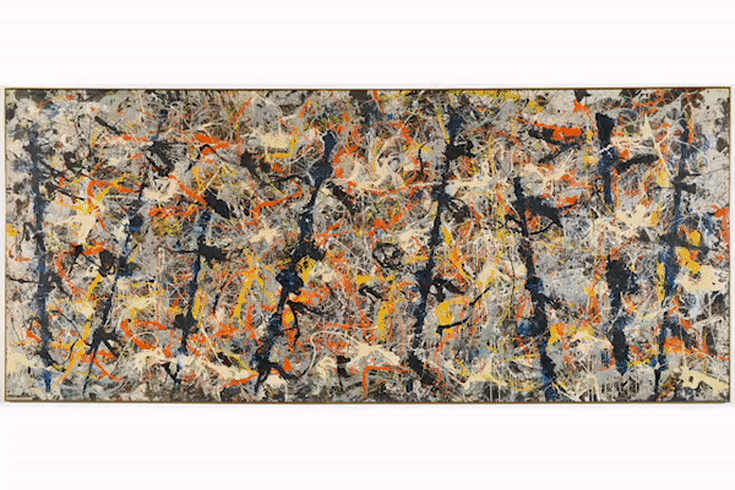
Blue Poles
Deveney, Renee. “Famous Artists & Their Drugs of Choice: Warhol, Van Gogh, & More.” The Recovery Village Drug and Alcohol Rehab. therecoveryvillage.com, October 24, 2022. https://www.therecoveryvillage.com/drug-addiction/artists-and-drugs/#:~:text=On%20August%2011%2C%201956%2C%20he,his%20unresolved%20past%20with%20alcohol.
Editors. “Jackson Pollock.” The Guggenheim Museums and Foundation. guggenheim.org. Accessed March 13, 2023. https://www.guggenheim.org/artwork/artist/jackson-pollock.
Editors. “Legacy of Jackson Pollock.” Encyclopædia Britannica. Encyclopædia Britannica, inc. Accessed March 13, 2023. https://www.britannica.com/biography/Jackson-Pollock/Legacy.
Tate, Editors. “Who Is Jackson Pollock?” Tate Kids. Tate.org. Accessed March 13, 2023. https://www.tate.org.uk/kids/explore/who-is/who-jackson-pollock.
Editors. “Abstract Expressionism Movement Overview.” The Art Story. theartstory.org. Accessed March 13, 2023. https://www.theartstory.org/movement/abstract-expressionism/.
Editors. “Circumcision by Jackson Pollock.” Circumcision Jackson Pollock Painting. thehistoryofart.org. Accessed March 13, 2023. https://www.thehistoryofart.org/jackson-pollock/circumcision/.
Editors. “Jackson Pollock.” The Guggenheim Museums and Foundation. guggenheim.org. Accessed March 13, 2023. https://www.guggenheim.org/artwork/artist/jackson-pollock.
Tate, Editors. “Abstract Expressionism.” Tate. Tate.org.uk. Accessed March 13, 2023. https://www.tate.org.uk/art/art-terms/a/abstract-expressionism.
Wolfe, Shira. “Art Movement: Abstract Expressionism.” Artland Magazine. magazine.artland.com, September 26, 2022. https://magazine.artland.com/abstract-expressionism/#:~:text=The%20Emergence%20of%20Abstract%20Expressionism,known%20as%20the%20Abstract%20Expressionists.
Editors. “Abstract Expressionism.” Encyclopædia Britannica. Encyclopædia Britannica, inc., January 27, 2023. https://www.britannica.com/art/Abstract-Expressionism.
Editors. “Jackson Pollock Paintings, Bio, Ideas.” The Art Story. theartstory.org. Accessed March 13, 2023. https://www.theartstory.org/artist/pollock-jackson/.
Editors. “Legacy of Jackson Pollock.” Encyclopædia Britannica. Encyclopædia Britannica, inc. Accessed March 13, 2023. https://www.britannica.com/biography/Jackson-Pollock/Legacy.
Tate, Editors. “Abstract Expressionism.” Tate. Tate.org.uk. Accessed March 13, 2023. https://www.tate.org.uk/art/art-terms/a/abstract-expressionism.
